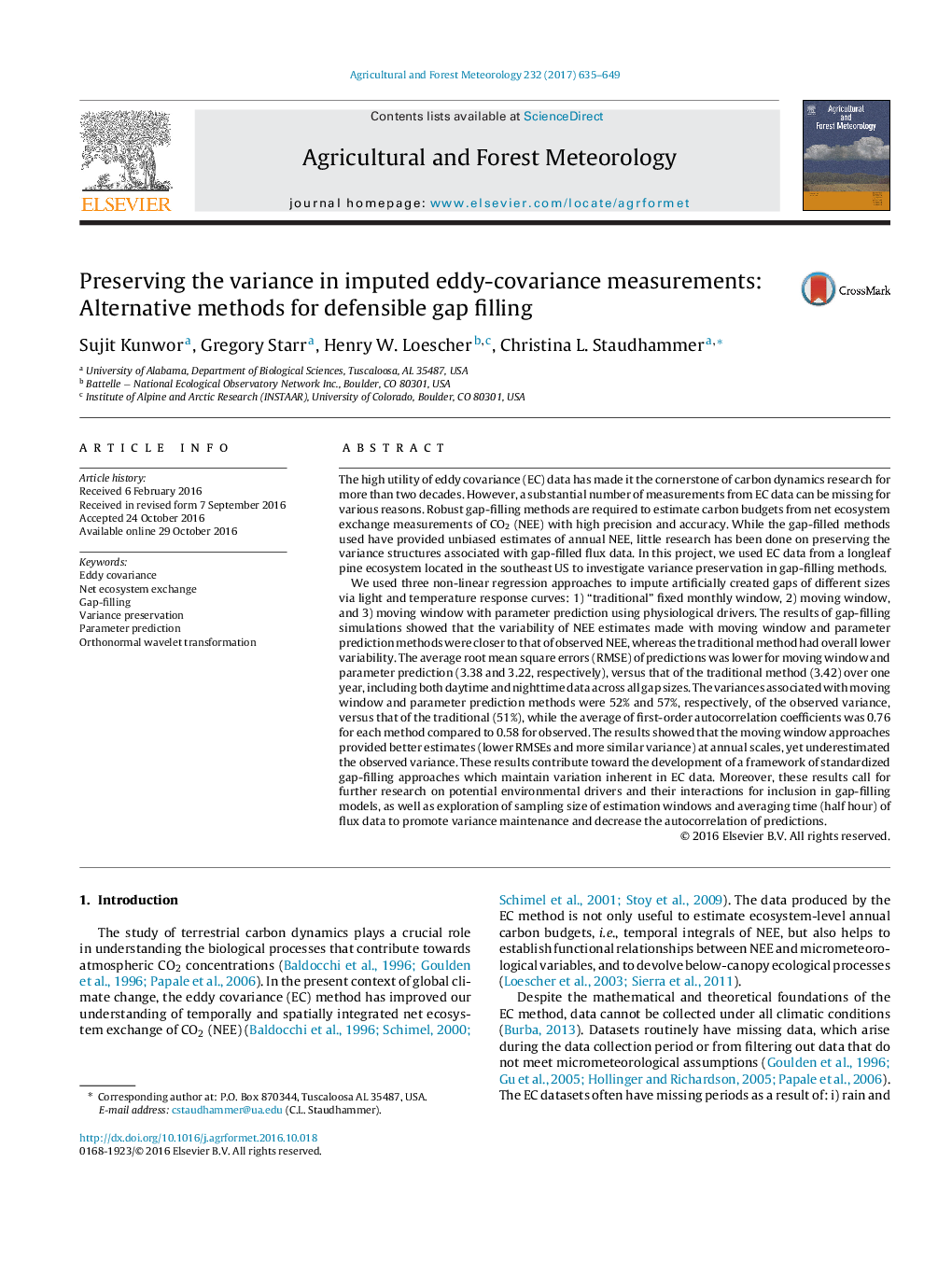| کد مقاله | کد نشریه | سال انتشار | مقاله انگلیسی | نسخه تمام متن |
|---|---|---|---|---|
| 6458161 | 1420865 | 2017 | 15 صفحه PDF | دانلود رایگان |
• Variance structures in carbon flux measurements are dampened when gap-filling.
• Gap-filling methods that do not use static windows better preserve variance.
• Autocorrelation among gap-filled data is much higher than that of observed data.
• Multiple environmental variables should be included in gap-filling methods.
• Altered averaging times for measured NEE could help retain variance structures.
The high utility of eddy covariance (EC) data has made it the cornerstone of carbon dynamics research for more than two decades. However, a substantial number of measurements from EC data can be missing for various reasons. Robust gap-filling methods are required to estimate carbon budgets from net ecosystem exchange measurements of CO2 (NEE) with high precision and accuracy. While the gap-filled methods used have provided unbiased estimates of annual NEE, little research has been done on preserving the variance structures associated with gap-filled flux data. In this project, we used EC data from a longleaf pine ecosystem located in the southeast US to investigate variance preservation in gap-filling methods.We used three non-linear regression approaches to impute artificially created gaps of different sizes via light and temperature response curves: 1) “traditional” fixed monthly window, 2) moving window, and 3) moving window with parameter prediction using physiological drivers. The results of gap-filling simulations showed that the variability of NEE estimates made with moving window and parameter prediction methods were closer to that of observed NEE, whereas the traditional method had overall lower variability. The average root mean square errors (RMSE) of predictions was lower for moving window and parameter prediction (3.38 and 3.22, respectively), versus that of the traditional method (3.42) over one year, including both daytime and nighttime data across all gap sizes. The variances associated with moving window and parameter prediction methods were 52% and 57%, respectively, of the observed variance, versus that of the traditional (51%), while the average of first-order autocorrelation coefficients was 0.76 for each method compared to 0.58 for observed. The results showed that the moving window approaches provided better estimates (lower RMSEs and more similar variance) at annual scales, yet underestimated the observed variance. These results contribute toward the development of a framework of standardized gap-filling approaches which maintain variation inherent in EC data. Moreover, these results call for further research on potential environmental drivers and their interactions for inclusion in gap-filling models, as well as exploration of sampling size of estimation windows and averaging time (half hour) of flux data to promote variance maintenance and decrease the autocorrelation of predictions.
Journal: Agricultural and Forest Meteorology - Volume 232, 15 January 2017, Pages 635–649
